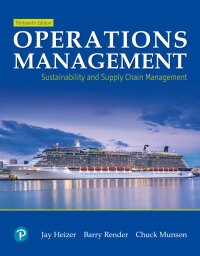2. What other processes can an airline examine? Why is each important? Alaska Airlines is unique among
Question:
2. What other processes can an airline examine? Why is each important? Alaska Airlines is unique among the nine major U.S. carriers not only for its extensive flight coverage of remote towns throughout Alaska (it also covers the U.S., Hawaii, and Mexico from its primary hub in Seattle). It is also one of the smallest independent airlines, with 10,300 employees, including 3,000 flight attendants and 1,500 pilots. What makes it really unique, though, is its ability to build state-of-the-art processes, using the latest technology, that yield high customer satisfaction. Indeed, J. D. Power and Associates has ranked Alaska Airlines highest in North America for 7 years in a row for customer satisfaction.
Alaska Airlines was the first to sell tickets via the Internet, first to offer Web check-in and print boarding passes online, and first with kiosk check-in. As Wayne Newton, Director of System Operation Control, states, “We are passionate about our processes.
If it’s not measured, it’s not managed.”
One of the processes Alaska is most proud of is its baggagehandling system. Passengers can check in at kiosks, tag their own bags with bar code stickers, and deliver them to a customer service agent at the carousel, which carries the bags through the vast underground system that eventually delivers the bags to a baggage handler. En route, each bag passes through TSA automated screening and is manually opened or inspected if it appears suspicious.
With the help of bar code readers, conveyer belts automatically sort and transfer bags to their location (called a “pier”) at the tarmac level. A baggage handler then loads the bags onto a cart and takes it to the plane for loading by the ramp team waiting inside the cargo hold. There are different procedures for “hot bags” (bags that have less than 30 minutes between transfer) and for “cold bags” (bags with over 60 minutes between plane transfers). Hot bags are delivered directly from one plane to another (called “tail-to-tail”). Cold bags are sent back into the normal conveyer system.
Step by Step Answer:

Operations Management: Sustainability And Supply Chain Management
ISBN: 9780135225899,9780135202722
13th Edition
Authors: Jay Heizer; Barry Render; Chuck Munson





